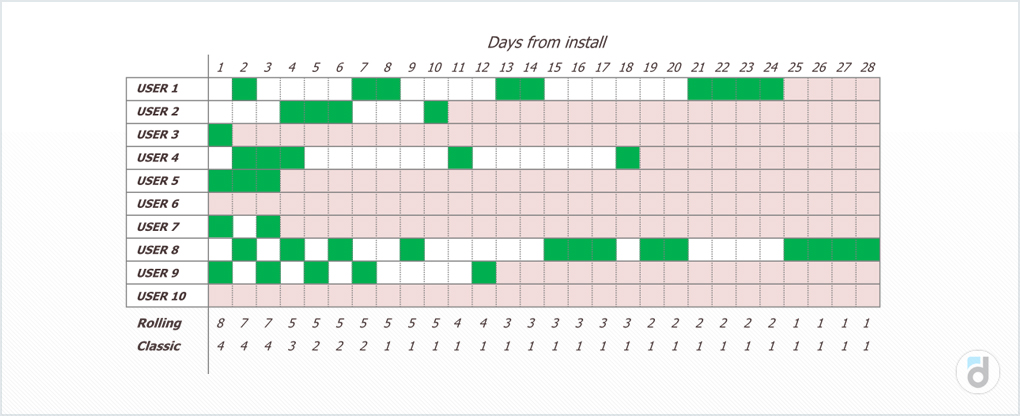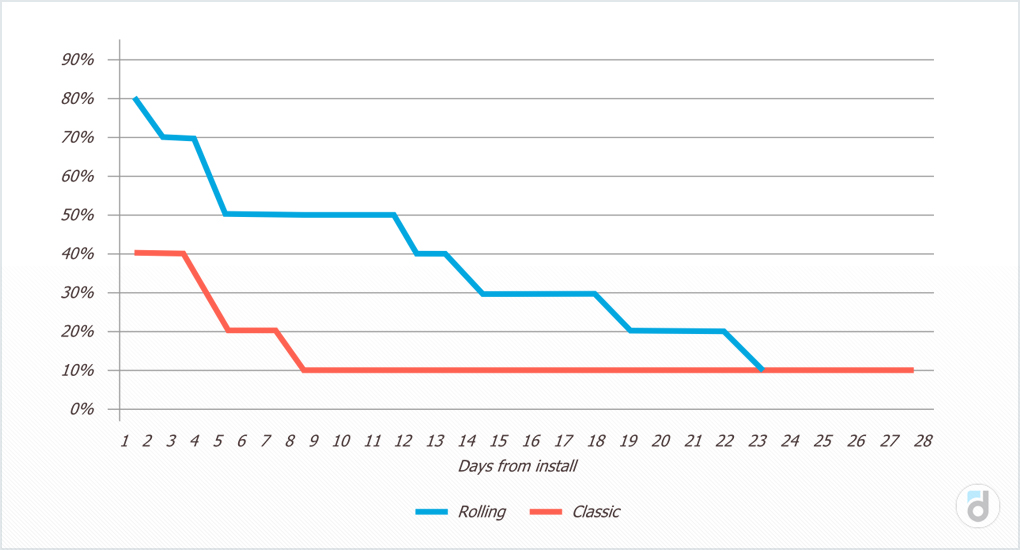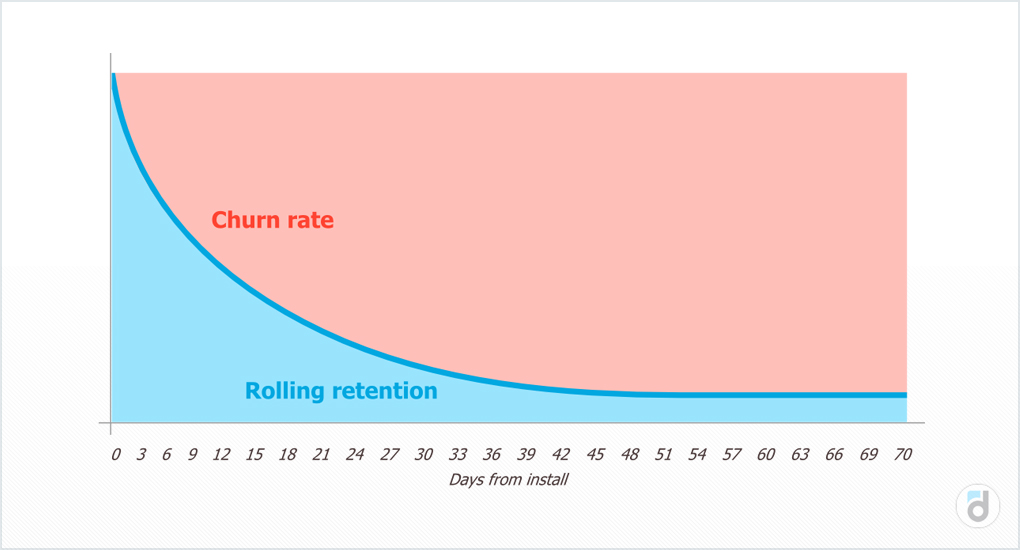4 types of retention: what is retention?
Retention can be different. Measuring the indicators of the product, one should definitely not be limited to one. How it happens, – says the analyst devtodev Vera Karpova in a new article in our series of materials “Performance indicators of games”.
The publication is published as part of a series of materials about game metrics from App2Top.ru and devtodev. Articles are divided by seasons, each of which is dedicated to a specific topic. The second season is called “Users”. In it, we talk about those business metrics that reflect the effectiveness of the application in terms of working with the audience.

Vera Karpova
When they say retention, they usually mean the classical calculation of the metric:
Retention N = Number of users who logged in on day N / Number of users who installed the app N days ago * 100%
But you can calculate retention in different ways.
4 types of retention
There are usually four more approaches to calculating retention.
1) Repeated retention (rolling retention)
Repeated retention of the nth day shows the percentage of users who returned to the application on day N from the moment of installation or later.
It takes into account those users who returned on day N who logged into the application on day N or later on any other day (N+m).
For example, a recurring retention of 10% on the 14th day means that 10% of users returned to the game on the 14th day and after.
2) Full retention
The full retention of the nth day shows the percentage of users who logged into the app every day before day N.
For example, the full retention of the 5th day is the percentage of users who logged into the application on the 1st, 2nd, 3rd, 4th and 5th days from the moment of installation.
3) Return retention
The return retention of the nth day shows the percentage of users who returned at least once in N days.
For example, the return retention of the 21st day will take into account every person who logged into the application on any day from the 1st to the 21st.
4) Range retention (bracket-dependent return retention)
The N-day range hold is a variation of the return hold. As you might guess, it records users who have returned to the application at least once during a certain period.
To calculate this retention, the parameter M is set in addition to N, which limits the time range for returning users.
Retention here is calculated as the percentage of users who returned to the application in the period M-N days.
For example, the retention range from the 14th to the 20th day will show the percentage of users who have launched the application during this period since installation.
What is the peculiarity of repeated retention?
Of all the options described above, rolling retention is the most commonly used.
Its formula looks like this:
Repeated retention N = Number of users who logged in on day N or later / Number of users who installed the app N-days ago * 100%
To begin with, let’s take an example of how this indicator is calculated.
Let’s assume that we have the following data about users and their sessions (green indicates the days when users logged into the application, and red indicates the days since the last visit, in which there were no visits):

The repeated retention of the nth day takes into account users who logged in on that day or later, which means those whose cell is green or white on that day.
After that, as with the classic retention, the proportion of these users from the number of users in the cohort is considered.
If we compare these two types of retention, we get the following picture:

Recurring retention is always greater than the classic one, since its calculation takes into account users who came not only on one particular day, but also on subsequent ones. Also, this type decreases more smoothly than the classical retention.
And there is another feature that distinguishes repetitive retention from the classical one, makes its use more difficult – this is the calculation itself.
The fact is that this indicator needs to be recalculated every day, since a user who has not logged in for several days and is considered gone may at some point use the application, which will affect the repeated retention of all previous days.
For example, the user logged into the application for the last time on the 7th day after installation. We calculated the cohort indicator for 25 days, and this user was no longer taken into account after the 7th. After that, he logged in on day 26, which means that the recurring hold from day 8 to day 26 should be calculated anew taking into account this user.
The point of using repeated retention is to take into account users who did not actually leave the project, but simply did not enter it for some reason, when we measured, for example, retention on day 7.
At devtodev, we believe that such a return indicator will be useful for applications that are not necessarily used every day, in games in which the user has to wait a long time for resources to accumulate or an object to be built.
There is another useful feature of this parameter. Retention, in principle, is considered a metric of the reverse outflow, and repeated retention allows you to count it even more accurately and simply.
The reason is simple. Repeated retention of a certain day takes into account users who log in on subsequent days. If the user is not considered to have returned, it means that he did not log in on the following days of the study period. It turns out that the area under the curve is the returned users (which our metric just shows), and the area above the curve is the outflow (those who have not logged into the application since a certain day).

Conclusion
Recurring retention is a useful metric that characterizes the interest of users in the project, shows when they will not return to it anymore, allows you to calculate such indicators as outflow and lifetime.
However, often repeated retention can misinform the developer, forming a positive impression, because his schedule decreases more smoothly, and the values themselves are often much higher than the classic retention, which can be critical for applications that ideally should be used every day.
Therefore, when analyzing the returnability of users, it is worth paying attention to both types of retention in order to make informed decisions.
Read also materials about other metrics:
- What do I need to know about retention?
- How to make the first session better: working on keeping the 1st day
- Learning how to work with the consumer basket (another way to improve monetization)
- Segmentation of paying players
- Lifetime
- Stickiness
- Conversion Funnel
- Outflow of users
- Total daily play time
- Average session duration
- Social LTV
- Downloads
- Active Users (DAU/WAU/MAU)
- K-factor (virality)
- Loyalty
- The first season of “Performance Indicators of games” has ended
